
"Cities: Skylines 2" preview: What to expect in the new City Builder
Dynamic weather, regional building styles and a much more complex simulation: my anticipation for "Cities Skylines 2" skyrockets like skyscrapers in Dubai after the play session.
Modern city-building simulators are rare. That's why "Cities: Skylines" is still regarded as a genre reference eight years after its release. But not for long: the successor is due in October. I was able to play the PC version for an hour at Gamescom and am convinced that fans will get their money's worth.
Bigger, more regional and stormier
One of the biggest innovations is the playing area. The individual plots on which I can build my city have shrunk somewhat. However, I can buy new ones and build my megacity on five times the area of "Cities: Skylines". CEO of Colossal Order Mariina Hallikainen explains to me that you don't have to keep growing to unlock new structures. The so-called "milestones", which are side tasks, can also be unlocked with a small cow village. This should give players more flexibility in their creations. The new regions also help with this.
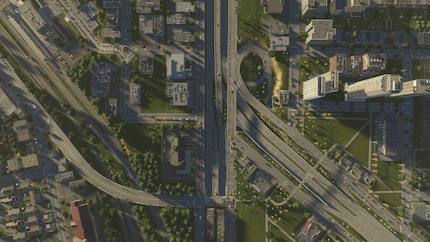
Source: Colossal Order
Cities in City Builders usually look very American: Streets in grid format with lots of skyscrapers. In "Cities: Skylines 2", I select a region at the beginning. This not only determines the architectural style of my buildings, but also the traffic signs, which side of the road the cars drive on and what the weather is like. "In the first part, we thought people wanted to build well-known mega-metropolises. But they would much rather recreate their own homes". Mariina assures us that this is now possible. Finnish landscapes are included, as is Brisbane in Australia.
I opt for Central Europe. If I were to build my city in Australia, the seasons would be different as well as the traffic and architecture. In the southern hemisphere, the seasons are reversed from our point of view.
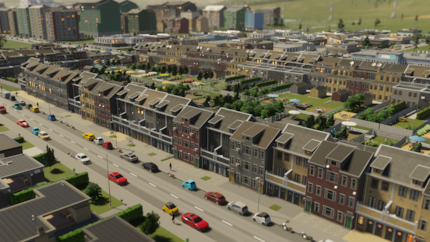
Source: Colossal Order
"Cities: Skylines 2" has a dynamic weather system. Depending on the geographical location, the days are longer, the clouds thicker and the temperatures lower. This has an effect on energy consumption, for example. In cold weather, the population has to heat more. When it rains a lot, indoor activities are more in demand. As happy as I am rubbing my hands with joy at this variety, heating costs are certainly not a problem.
Optionally, I can also activate natural disasters. That's what I do in my demo. Unfortunately, my city is spared hailstorms, tornadoes and forest fires in the short time available.
More sim in simulation
"Cities: Skylines 2" has upgraded the simulation of the inhabitants in particular. "In the first part, the car was simply put in your trouser pocket on arrival. Now every vehicle needs a parking space," Mariina explains to me. And I actually watch as a vehicle drives from a building to the office and is parked there. Even parking fees are recorded. The AI has been completely overhauled for the traffic system. The first part was notorious for its epic traffic jams. In contrast, the queue in front of the Gotthard during the summer holidays is not worth a traffic jam report. Route finding in "Cities: Skylines 2" is based on the four aspects of time, comfort, money and behaviour. The aspects are weighted differently depending on the situation and person. For example, a sick car is more likely to make a U-turn than a commuter.
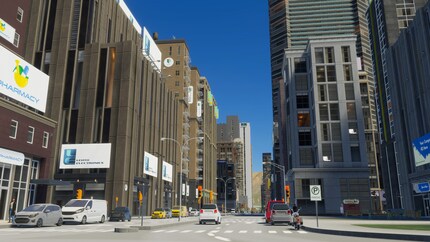
Source: Colossal Order
Now I can follow anyone. And not just through the city, but through their entire life. I can give people individual names and favourites, just like streets. That way I can find them again later. Almost like in "The Sims", each person has their own "life path". They grow up, go to school, buy a pet and so on. "Cities: Skylines 2" tracks every movement.
More complex building options
My city, which I build during Gamescom, grows slowly. My city planning skills are a bit rusty. Luckily, I can use various displays to read off needs, power coverage and traffic volumes. But the beginning is always the same. The first thing I do is build a power station and move electricity pylons to where my settlement is to be built. I notice that there are two different power circuits. I use the large electricity pylons to transport high voltage. I have to convert this with a transformer station so that Mrs Meier doesn't have to bang her microwave around her ears. The smaller electricity pylons with the low voltage also fit better into the cityscape.
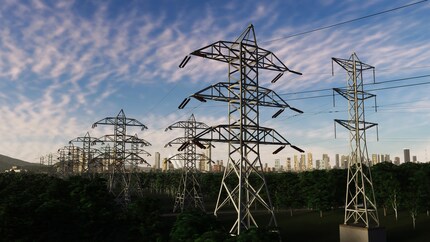
Source: Colossal Order
Next, I take care of the water supply. From the pumping station by the river, I generously pull pipes to wherever I've built construction zones. Mariina, who probably sees a greater need for support from me than from the other media representatives, points out to me that the roads already have pipes. I can even choose some that carry waste water and fresh water at the same time. So I only have to run one pipe each from the pumping station and the sewage treatment plant to a street and the cycle is closed. At least almost. On closer inspection, I realise that the pipes are not connected. "Yes, the pipe system is sometimes a bit cumbersome," Mariina remarks with a smile. There are several underground levels. I have to connect one pipe, which is about 20 metres underground, to the one five metres below. After that, it flows.
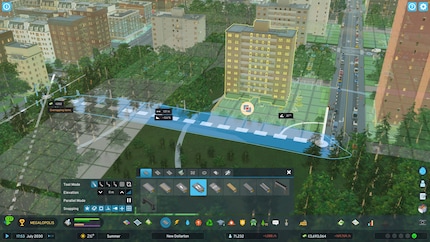
Source: Colossal Order
A much requested feature is "Mixed Housing". This allows me to create mixed zones instead of separate residential, commercial and industrial zones as before. This should make the cityscape somewhat more homogeneous than with the strict separation of zones. However, the shape of my city is too uniform. Even without the new grid template, I automatically arranged my streets in the style of New York. In "Cities: Skylines 2", for example, there are streets that meander. This results in a much more organic cityscape. Even roundabouts are now available.
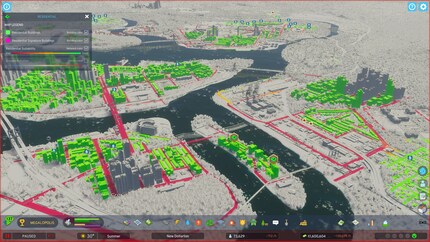
Source: Colossal Order
Life is slowly coming to my town. The first school, a police station and a townhouse are built. I have the option of upgrading many of the buildings and thus expanding their sphere of influence. A menu pops up for everything I click on, offering numerous setting options. In the short time I was able to play, I didn't realise how much I could do. It is clear, however, that significantly more micromanagement is possible. Of course, there are also "chirpers" again. "Cities: Skylines'" equivalent of Twitter. "Actually, we should rename it Y," says Mariina with a grin. Twitter has recently been called X.
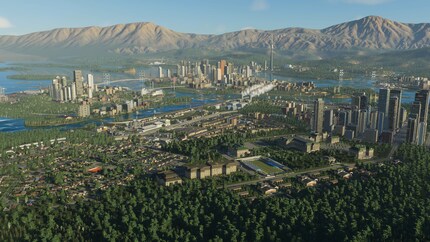
Source: Colossal Order
In the hour or so that I was able to let off steam in "Cities: Skylines 2", I only scratched the surface. But it's obvious that a lot has changed. Not only does the game look much prettier, it is also full of small details. The many new systems and improvements promise a complex city simulator in which you can once again sink countless hours.
"Cities: Skylines 2" will be released on 24 October for PC, PS5 and Xbox Series S/X.
As a child, I wasn't allowed to have any consoles. It was only with the arrival of the family's 486 PC that the magical world of gaming opened up to me. Today, I'm overcompensating accordingly. Only a lack of time and money prevents me from trying out every game there is and decorating my shelf with rare retro consoles.
From the latest iPhone to the return of 80s fashion. The editorial team will help you make sense of it all.
Show all